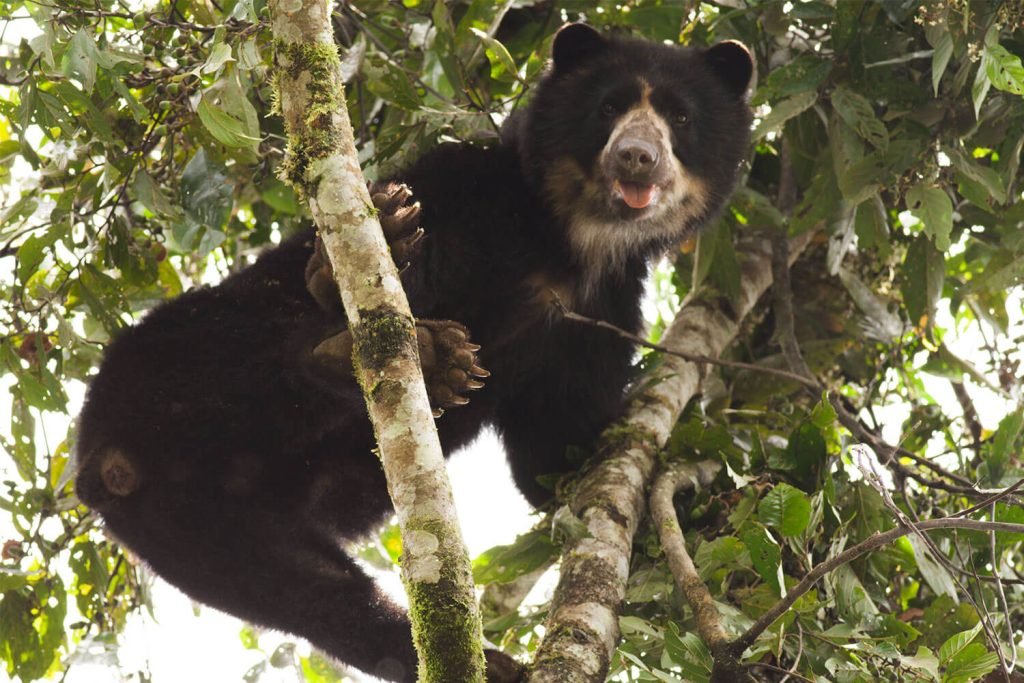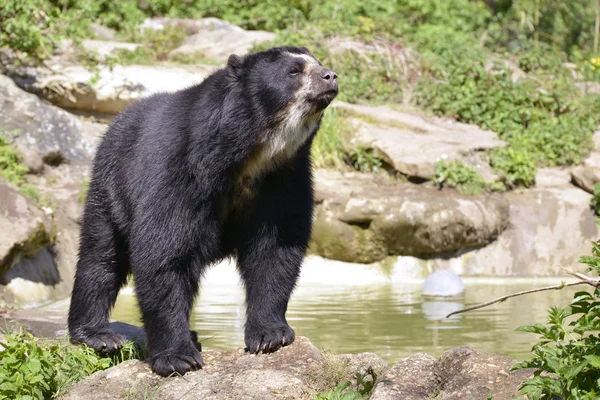Spectacled bears, also known as Andean bears (Tremarctos ornatus), are found mainly in countries in the Andean region of South America. Their natural habitat is at high altitudes, in forests and mountainous areas. Although their distribution is more common in some countries, sightings of these animals have been recorded in several Andean nations.
Peru:
- Peru is home to the largest population of spectacled bears and is considered the country with the greatest extent of suitable habitat for these animals. They are found mainly in the mountainous regions of the Peruvian Andes, including the Andes Mountains, the Amazon rainforest and cloud forests. National parks such as the Salinas y Aguada Blanca National Reserve and Manu National Park are areas where it is possible to spot these bears.
Colombia:
- Spectacled bears are also found in parts of Colombia, especially in the mountainous areas of the Andes. They are seen in regions such as the departments of Boyacá, Cundinamarca and Santander, where they find a suitable habitat for their survival.
Ecuador:
- In Ecuador, spectacled bears are found in the mountainous areas of the Andes and parts of the Ecuadorian Amazon rainforest. Regions such as Cotopaxi National Park and Cajas National Park are known to harbor these animals.
Bolivia:
- Bolivia is also home to spectacled bears, which are found in mountainous areas of the Bolivian Andes. Sajama National Park and Madidi National Park are examples of places where these animals can be sighted.
Although these countries are the main places where spectacled bears are found, occasional sightings have also been reported in other countries in the Andean region, such as Venezuela, Argentina and Chile. However, it is important to note that the distribution of these bears is limited and is related to the availability of suitable and conserved habitats.
Conservation of spectacled bears is extremely important to ensure the survival of these endangered animals. Continuous monitoring of their populations and protection of their habitat are essential to preserve this magnificent species and contribute to the ecological diversity of the Andean regions.
Monitoring of spectacled bears

The monitoring of spectacled bears, also known as Andean bears (Tremarctos ornatus), is an important activity to learn about the population, behavior and health of these endangered animals. There are several techniques and methods to carry out this monitoring and obtain valuable information about Andean bears. Let’s explore some of these methods:
Direct observation:
- Direct observation is one of the simplest and most effective ways to monitor spectacled bears. Researchers and conservationists conduct expeditions to areas where these animals are known to live and spend time observing them in their natural habitat. These observations can provide information on the behavior, diet, reproduction and social interaction of Andean bears.
Camera trapping:
- Camera trapping consists of installing automatic cameras at strategic locations to capture images of spectacled bears. These cameras are equipped with motion sensors that are activated when an animal passes through the monitored area. This technique makes it possible to collect data on the presence, distribution and activity of Andean bears without the need for direct human interference.
GPS tracking:
- The use of GPS tracking devices is a valuable tool for monitoring the movements and migratory routes of spectacled bears. These devices are placed on selected individuals and transmit location information in real time. This helps to understand the bears’ movement patterns, feeding grounds, and territories, providing crucial data for conservation.
Fecal analysis:
- Studying spectacled bear feces, called scat, can provide information about their diet, health and presence. Researchers collect stool samples and analyze them in the laboratory to identify food remains and obtain data on bear health and disease.
Genetic tracking:
- Genetic analysis is a powerful tool for understanding the population structure and genetic diversity of spectacled bears. Collecting DNA samples, such as hair, saliva and tissue, allows individual bears to be identified and helps to map family relationships and connectivity between populations.
These are just some of the techniques used to monitor Andean bears. From the information collected, researchers can assess population size, geographic distribution, demographic trends and bear health. These data are essential for developing conservation strategies and implementing appropriate protection measures to ensure the survival of these magnificent animals in the Andean regions.





